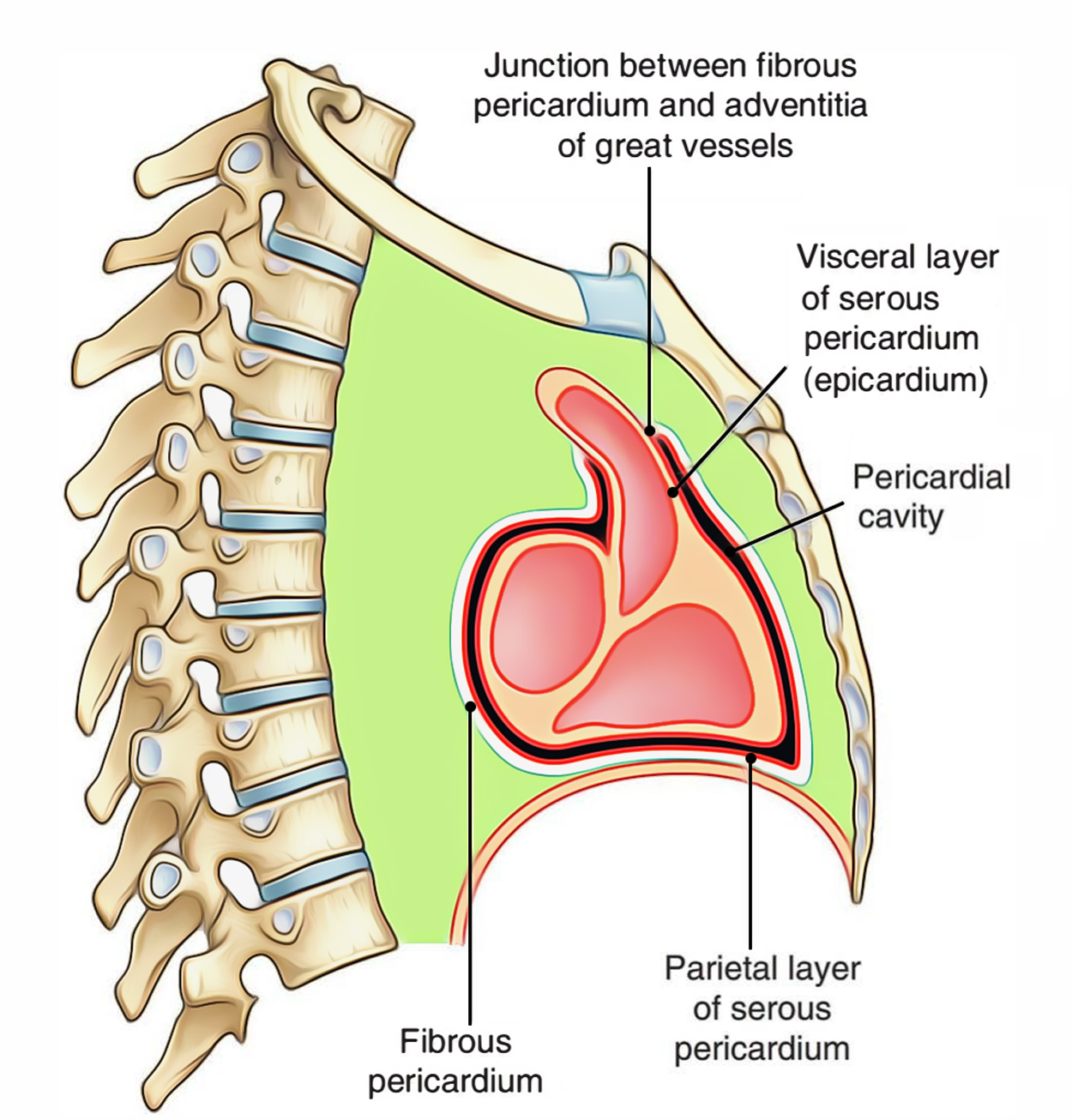The epicardium or visceral pericardium is the outermost layer of the wall of the heart. It is a thin, transparent layer. It is composed of serous tissue along with a type of epithelial tissue called mesothelium. It can also be called the serous pericardium of the heart due to its serous nature.

Epicardium
Structure
- The epicardium is primarily made up of loose connective tissue, along with elastic fibers and adipose tissue.
- A space referred to as the pericardial cavity is located in the middle of the epicardium of the heart and the serous pericardium of the pericardial sac.
- This cavity contains a fluid known as the pericardial fluid, which decreases friction and erosion of tissue among these membranes as the heart enlarges and contracts at the time of cardiac cycle.
- This epicardium can also be referred to as the visceral peritoneum, because the outermost layer of the heart is the outermost layer of an organ of the body.
Functions
- The epicardium protects the inner heart layers.
- It assists in the production of pericardial fluid.
- This fluid fills the pericardial cavity and helps to reduce friction between pericardial membranes.
- The coronary blood vessels are also found in this heart layer, which supply the heart wall with blood.
- The inner layer of the epicardium connects with the myocardium.

 (54 votes, average: 4.86 out of 5)
(54 votes, average: 4.86 out of 5)